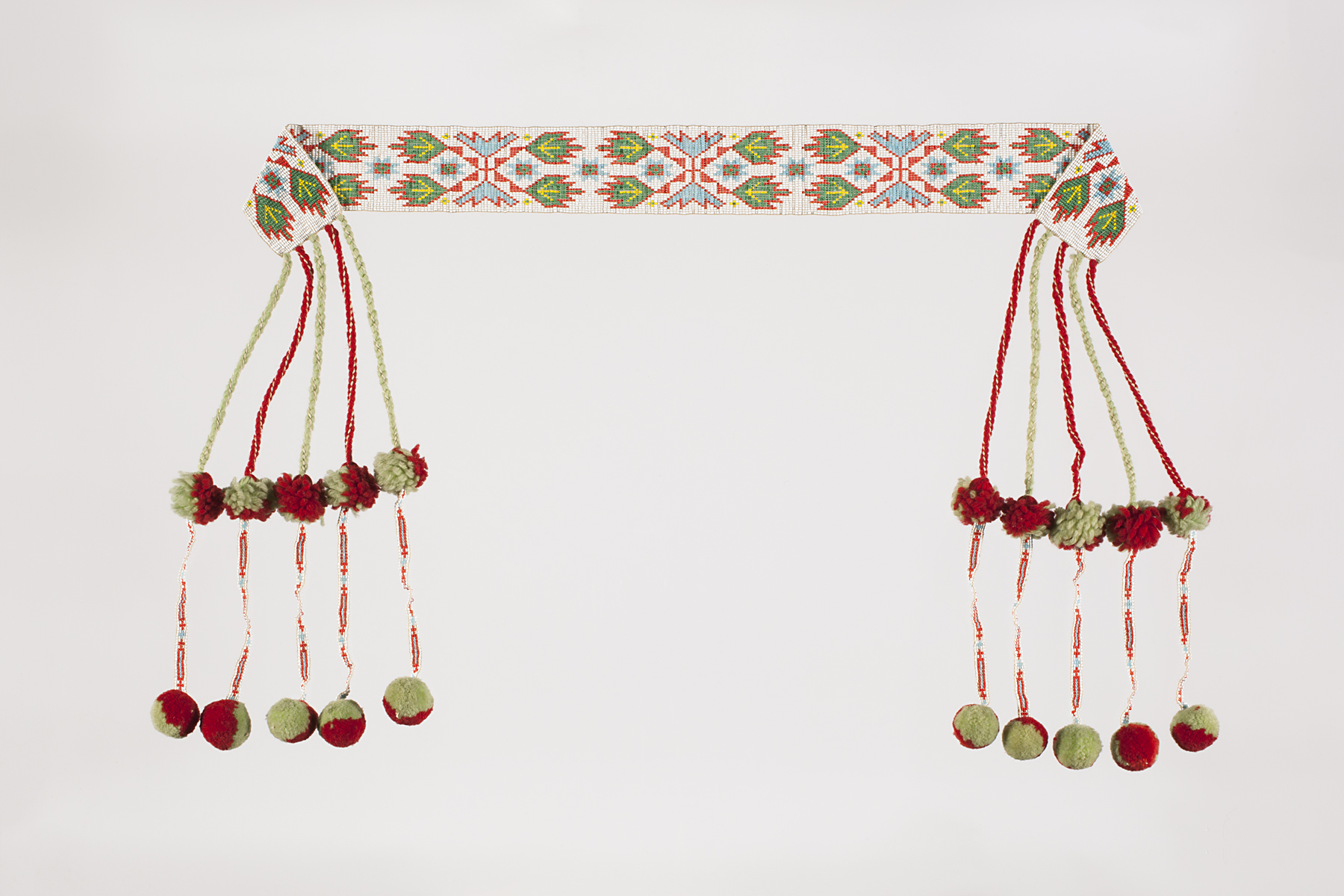beaded sash, unrecorded Potawatomi artist
Artwork Overview
unrecorded Potawatomi artist, artist
beaded sash,
early 1930s
Where object was made: Kansas, United States
Material/technique: wool yarn; beading
Dimensions:
Object Length/Width (Length x Width): 149 x 6 cm
Object Length/Width (Length x Width): 2 3/8 x 58 11/16 in
Object Length/Width (Length x Width): 149 x 6 cm
Object Length/Width (Length x Width): 2 3/8 x 58 11/16 in
Credit line: Gift from the Menninger Foundation
Accession number: 2007.1546.03
Not on display
If you wish to reproduce this image, please submit an image request


